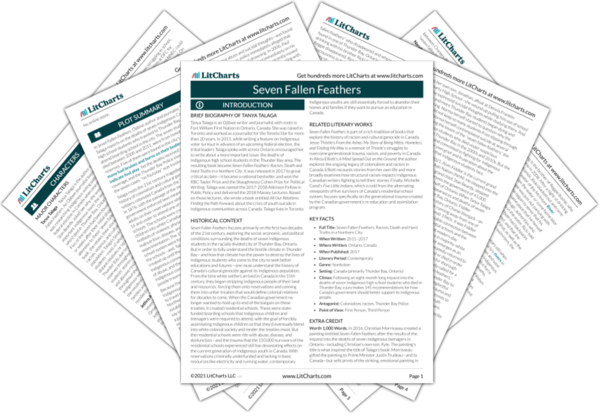AI ToolsNew
Tools to make learning and teaching easier
|
Previous
Chapter 7: Brothers
|
Seven Fallen Feathers: Chapter 8: River, Give Me My Son Back Summary & Analysis |
Next
Chapter 9: Less Than Worthy Victims
|


Upgrade to unlock the analysis and theme tracking for all of Seven Fallen FeathersSeven Fallen Feathers!
Get LitCharts A+